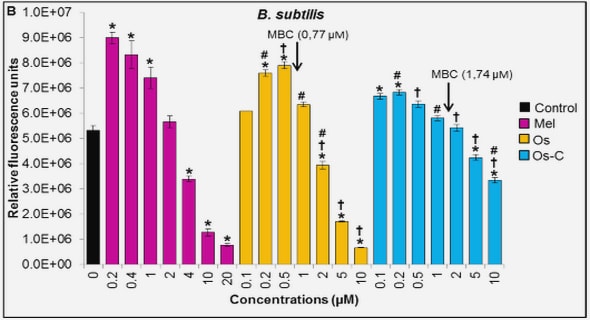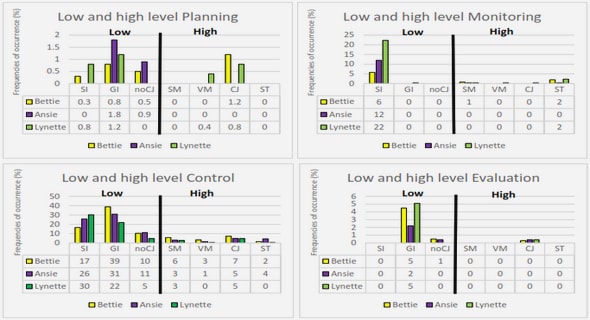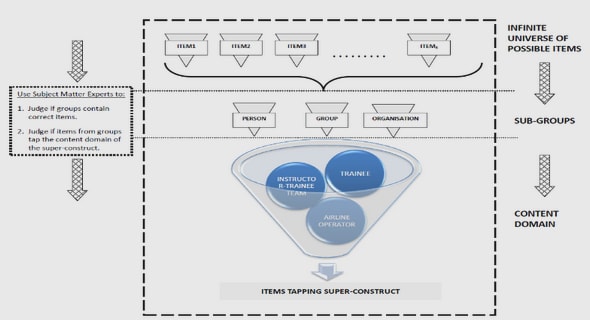Get Complete Project Material File(s) Now! »
Low-energy collision induced dissociation (low-energy CID)
Here in this thesis, by low-energy CID, we mean the collisional activation occurring in quadrupole ion traps, although it can be performed in both quadrupole ion trap and ICR cell. In addition, since almost all the experiments in this thesis were performed using a linear quadrupole ion trap, here, a short introduction of this kind of ion trap is presented.
Linear ion trap mass spectrometer
The quadrupole ion trap is a device which can function either as a mass analyzer or as an ion trap for confinement of ions. By applying suitable potentials to the two ends of the electrodes of the ion trap, a potential well is built inside the trap which enables storing of the ions for a period of time. Afterwards, by linear scanning of the amplitude of radiofrequency (RF) potential, each ion with specific mass to charge ratio (m/z) will be ejected from the potential well at a special RF amplitude; enabling the quadrupole ion trap to act as a mass analyzer.
Higher-energy collision dissociation (HCD)
HCD is a fragmentation technique which is available in LTQ/orbitrap hybrid mass spectrometers. Initially, the idea for developing this technique was in view of performing triple quadrupole-like fragmentation by isolation of the precursor ions in the LTQ and then dissociation of them inside a C-trap.139 C-trap is a curved liner ion trap located between LTQ and orbitrap, and its initial purpose is storing the ions before being analyzed in the orbitrap. Mann and co-workers performed ions’ dissociation inside the C-trap by increasing its radiofrequency voltages up to 1000 V higher than the normal value, which was 1500 V peak to peak.139 The configuration of this fragmentation technique which is called higher-energy C-trap dissociation is presented in Figure 2-10. First, precursor ions of interest are isolated in the LTQ. Then, by reducing the voltage (see inset at the top of Figure 2-10), they are allowed to pass through a transfer octopole and enter to the C-trap. In the C-trap, under the influence of accelerating voltage, ions experience collisions with the nitrogen gas at a pressure of about 1 mTorr, and then dissociate. Afterwards, remaining precursor ions and produced fragments are transferred into the Orbitrap for analysis. The main limitation of this configuration is the unsatisfactory trapping efficiency of the low mass ions at the increased radiofrequency voltage. As a matter of fact, normally, the C-Trap has a high trapping efficiency for both low mass ions and high mass ions. But, during HCD, ions enter to the C-trap with a high kinetic energy, and due to the curved geometry of the C-trap, high mass ions are especially susceptible to be lost. To reduce this problem, it is necessary to increase the amplitude of the radiofrequency voltage which in turn moves the low mass cut off (LMCO) limit to higher m/z values.
Low-energy CID
The low-energy CID technique requires that the selected reference H-G complex have only a single dissociation pathway. This avoids difficulties that may arise from different competitive decomposition pathways taking precedence in different dissociation time-windows (which consequently influence derived activation parameters). Therefore, it is necessary to use a reference system with a unique dissociation route, such as H-Gref. Furthermore, in low-energy CID experiments, the probability of consecutive fragmentation is very low due to the resonant excitation of only the precursor ion and not the fragments, and to the very low amount of energy deposited on precursor ions, resulting in fragment ions that do not have enough energy to undergo dissociation. By obtaining fragmentation efficiency curves at different times and energies one can ensure the absence of consecutive fragmentation, and finally obtain the activation parameters for individual dissociation pathways.
After obtaining the activation parameters for the reference H-G system, temperature calibration was performed as follows: first, for the H-Gref, dissociation rate constants at various amplitudes (1.2 to 1.6 V) were measured (Figure 5-2). H-Gref has a relatively large size, and relatively low dissociation rates (0.01 to 0.35 s-1) were observed inside the LTQ. This strongly suggests that the REX limit condition is fulfilled, and consequently, the Arrhenius equation (Equation 1.50) can be applied to calculate the effective temperature of H-Gref ions at each excitation amplitude.
Comparison of H-G complexes for various guests
The pre-exponential factors obtained using low-energy CID experiments in the LTQ are very similar for all the H-G complexes (an average of 14.6). Therefore, for comparing their stabilities, one can directly rank their activation energies. In addition, it can be expected that dissociation of all the complexes is occurring with almost the same type of rather “loose” transition state (i.e., a high value of the activation entropy (usually log A > 14),106 is characteristic of direct bond cleavage from a transition state whose structure resembles those of the fragments (late transition state) with a negligible reverse activation barrier). A closer look at the series of guests bearing a carboxylate function: glycine (2),-alanine (3), 4-aminobutyric acid (4) and 7-aminoheptanoic acid (5), reveals relatively weak interactions in this group of guests. Moreover, increasing the size of the alkyl chain does not have a substantial effect on the H-G binding strength. Each guest molecule in this group is likely to exhibit similar types of interactions with the host, i.e. zinc metal coordination,57 along with possible cation- interaction42,244 and hydrogen bonding.
In considering the complexes of phenyl glycine (6) and 4-aminobenzoic acid (7) (Figure 5-1b), their sizes are similar, but their main difference is the position of the ammonium and carboxylate functional groups. As can be seen in Table 5-3, their activation energies are almost the same, indicating that the H-G interaction in this case is only slightly influenced by the relative location of the carboxylate and the ammonium. In addition, their complexes are more stable compared to the previous group, likely due to the possibility for - interactions between the phenyl groups of these two guests and the linkers in the cage structure.
In considering betaine (1) versus glycine (2) (Figure 5-1b), these two molecules differ only by the presence of a trimethylammonium group (-N(CH3)3+) on the former, instead of an ammonium group (-NH3+) on the latter. The main interactions that methyl groups of betaine could participate in are C-H… interactions with the host, and the contribution of this interaction results in a distinction between 1 and 2, because the trimethylammonium moiety clearly augments the host-guest interaction.
In comparing the three guests bearing a sulfonate group (Figure 5-1b), only the length of the alkyl chain separating the sulfonate function from the ammonium group is changing. It can be seen that complexes of taurine (9) and 3-amino-1-propane-sulfonic (10) acid have higher binding energies compared to that of the shortest chain aminomethanesulfonic acid (8). With the sulfonate group tethered to the Zn(II), this result suggests the importance of the ammonium position to participate in H-G stabilization and increase interaction with the host.
Table of contents :
Table of contents
List of Abbreviations
Introduction générale
Chimie hôte-invité
Hémicryptophanes
Spectrométrie de masse en tandem
Ionisation par électronébulisation
Préface
Chapter 1: Fundamentals of unimolecular ion dissociation
Lindemann mechanism
Hinshelwood theory
RRK theory
Transition state theory
The RRKM/QET theory
Chapter 2: A general introduction to the utilized fragmentation techniques
Blackbody infrared radiative dissociation (BIRD)
Low-energy collision induced dissociation (low-energy CID)
Higher-energy collision dissociation (HCD)
Chapter 3: Low-energy CID, CID and HCD mass spectrometry for structural elucidation of saccharides and clarification of their dissolution mechanism in DMAc/LiCl
Introduction
Experimental section
Results and discussion
Conclusion
Chapter 4: Investigation of hemicryptophane host-guest binding energies using high-pressure collision induced dissociation in combination with RRKM modeling
Introduction
Experimental Section
Modeling Detail
Results and Discussion
Conclusion
Chapter 5: Investigating binding energies of host-guest complexes in the gas-phase using low-energy collision induced dissociation
Introduction
Methodology Background
Experimental section
Results and discussion
Conclusion
Chapter 6: Investigating binding energies of host-guest complexes using higher-energy collision dissociation in the gas-phase
Introduction
Experimental section
Modeling detail
Results and discussion
Conclusion
Chapter 7: Dissociation energetics of lithium-cationized -cyclodextrin and maltoheptaose studied by low-energy collision induced dissociation
Introduction
Experimental section
Results and discussion
Conclusion
General conclusion
References


